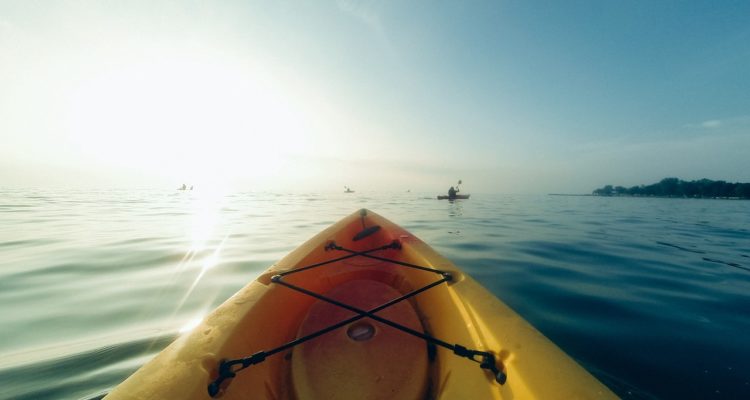I learned about adventure early in life. It pretty much happened because I had a boat.
That might sound weird unless you grew up on an island as I did, but that boat gave me a kind of freedom as a fourth grader that I think is pretty rare today. I grew up on Puget Sound in Washington. That’s about as far away from a calm pond or lake as you can get. My parents also trusted me and gave me a lot of freedom to explore. So that’s what I did. I fished, saw whales, hiked on some pretty remote beaches and had what I felt was a pretty adventurous life. As I grew older, that continued because it was a big part of me, and there wasn’t very much else to do on the island.
In college, I had some cool opportunities to go on mission trips and spent an entire quarter living in Europe, traveling with a professor and other students. Similar to my youth, I had a sense of freedom, wonder and excitement about the opportunities that existed. Adventure became a part of my DNA.
When I started working with students, I brought that same sense of adventure with me. Early in my classroom when I was teaching, it wasn’t enough simply to talk about things. I wanted my students to get out and feel what they were learning.
So we did things such as hiking, climbing, repelling—anything I could get away with that would bring adventure to their lives and learning.
Infusing Adventure
In the youth ministry world, it’s incredibly important to add adventure to everything we do. This is especially important on mission trips. We often are so focused on what we are doing that we forget to look around and see what God has created and what He’s doing. The locations, cultures, people and life offer all kinds of cool pieces and places we need to explore so we can see and experience the real world.
One spring break, we took a group of students to Mexico to build houses. It was a good trip, but we’d done it quite a few years in a row, and I knew it had lost some of the original excitement among our older students. I wanted to do something they would remember, so I had the brilliant idea of having a huge bonfire we could dance around and have fun with. I took one of our trucks, and in the course of one afternoon found about 20 wood pallets that would be perfect for a bonfire. We stacked them up, and when it got dark, we lit the whole pile. It was an adventure, but not exactly the one I had planned. I had no idea how quickly the pallets would burn, how hot they would get or (most important) notice that our tents were too close to the inferno. There were a few frantic moments of ripping our tents out of the ground and dragging them 30 yards away from the roaring fire. No one got hurt, and now it’s a pretty funny memory. I know for sure no student will forget that trip, and every once in a while I get a text from a former student recounting the moment and laughing about our adventure.
One summer, we were going to Poland to help restore an old church. We decided to partner with a German and a Polish youth group. The work was pretty boring. We essentially dusted everything for about four days. We built adventure into the trip by taking the entire group to Auschwitz to tour the concentration camp. That was probably the most difficult debrief discussion I’ve ever led as all three groups had very different experiences. I was amazed at the depth of insight, pain and openness the students all shared with each other. I know that hearing about Auschwitz from a Polish teenager explaining how some of their families had been there was incredibly eye opening for my American students and perhaps even more for the German students who had relatives there, too, but in very different roles. This adventure actually led to some pretty difficult yet incredible conversations as the American students actually were confronted by the other two groups because they didn’t show enough respect and reverence for what had happened there. That adventure completely impacted the American students in a way I had not expected.
Following Jesus Shouldn’t Be Boring
1. Dream big
2. Don’t forget the main purpose
3. Plan ahead
4. Talk to your other leaders
5. Advance recon
6. Go outside
7. Street food
8. Remember the culture
9. Be safe
Adventures really are fun until someone gets hurt. Years ago on a mission trip to Nicaragua, my wife and I were introducing our 1-year-old daughter to local frogs. We kept moving her about 6 inches from the frog’s mouth and saying, “Look at the frog,” and laughing. About 10 minutes later, we learned from our host about being careful about getting too close to frogs because their saliva can blind you. Remember: You are only one bad decision away from risking injury and losing parents’ trust and perhaps your job.
The ultimate purpose of all of this is to point our students to a life with Jesus that is full of life, adventure and excitement. We have such an amazing opportunity to help them see how Jesus wants them to really live life with Him. I love looking back on pictures or hearing stories from students years later who say, “Remember when we did that?” and I know that in part the adventures helped connect their faith to a deeper part of their lives.




